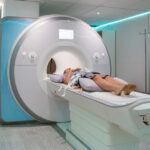Angioplasty, which often includes the insertion of a stent, is a minimally invasive procedure aimed at opening blocked coronary arteries. These arteries are responsible for delivering blood to the heart muscle. When plaque accumulates, it can narrow or obstruct these arteries, potentially resulting in chest pain (angina) or a heart attack. This procedure is essential for individuals who are experiencing these symptoms or have been diagnosed with coronary artery disease. It plays a critical role in restoring blood flow and preventing additional heart-related issues.
Procedure Overview
During an angioplasty, a thin, flexible tube called a catheter is inserted into an artery, typically in the groin or wrist. Using X-ray imaging for guidance, the catheter is carefully threaded to the blocked coronary artery. A small balloon at the end of the catheter is then inflated, which compresses the plaque against the artery walls and opens up the narrowed area. Often, a stent—a small mesh tube—is placed afterward to help keep the artery open. This procedure usually lasts between 30 minutes to an hour, depending on how complex the blockage is. We use advanced imaging techniques and drug-eluting stents (DES) and Drug Eluting Balloon (DEB) to reduce complications and enhance long-term results.
Benefits & Importance
Angioplasty provides several benefits compared to traditional open-heart surgery, such as a quicker recovery, smaller incisions, and reduced pain. It effectively alleviates chest pain, enhances blood flow to the heart, and lowers the chances of future heart attacks. By restoring adequate blood flow, angioplasty significantly boosts heart function and overall quality of life. For numerous patients, it plays a vital role in managing coronary artery disease and helps them return to a more active lifestyle.
Preparation & Requirements
Prior to the procedure, you’ll undergo a thorough evaluation, including blood tests, an electrocardiogram (ECG), and possibly an angiogram. You’ll be asked to fast for several hours before the angioplasty. We will provide detailed instructions about any medications you need to stop or adjust. During the procedure, you’ll be awake but given medication to help you relax or sedated. After the angioplasty, you’ll need to stay overnight in the hospital. You will be monitored closely, and provided with pain relief as needed. You can expect a small bruise or tenderness at the insertion site.
Risks & Considerations
While angioplasty is generally safe, there are potential risks, including bleeding or infection at the insertion site, allergic reactions to the contrast dye, and damage to the blood vessel. In rare cases, the artery may re-narrow (restenosis) or a blood clot may form. It’s important to discuss your medical history and any allergies with your doctor. Angioplasty might not be suitable for all patients, particularly those with severe heart failure or complex blockages.










